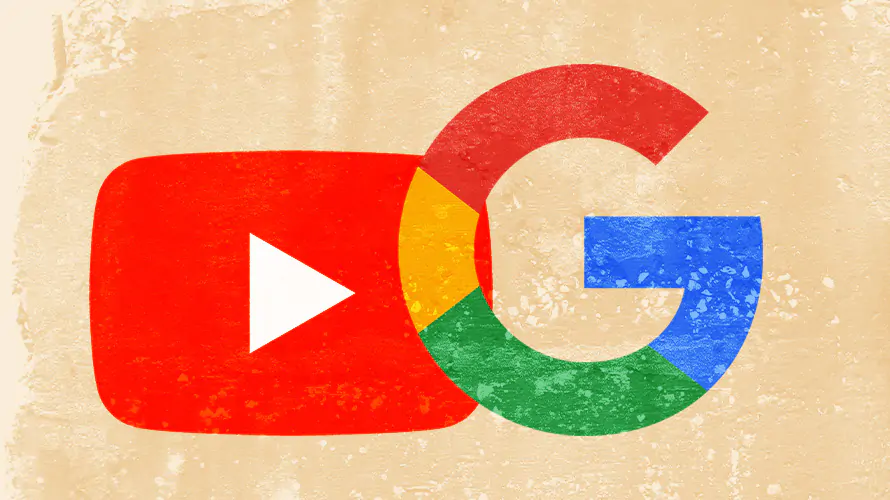
In a world where advertisements have also become a digital platform, google ads and YouTube ads play a significant role. Cost-effective advertising solutions are also one factor that grabs the attention of various businesses and this is offered by both platforms. Google ads show advertisements to others based on their searches and show them to people who are seeking products via their platform. This feature is most beneficial for marketers who want to reach those customers. YouTube Ads, however, has an advantage of the widespread reach that the platform has gained over the years. In this blog, we shall be looking at Google Ads vs. YouTube Ads Comparison.
What is a Google Ad?
A Google ad, also known as online advertising, is an online marketing tool that is displayed on several Google-powered channels such as Google Search, YouTube, and the Google Display Network. These kinds of ads constitute a way for their promotion of products, services, and content to their desired audiences through keywords, viewing habits, and other criteria. Google ads commonly appear next to organic Google searches, on YouTube videos, in mobile apps, or on websites that belong to the Google Display Network.
Google ads take several formats, for instance, text ads, image ads, video ads and interactive ads. Advertisers bid for particular keywords relevant to their products and services. After that, Google uses one thing which is a combination of the bid amount, relevance and ad quality to decide which ad appears and in what order. Google ads give businesses an effective way to bring more exposure to their brands, boosting website traffic which in turn leads to the conversion of leads or sales.
What is a YouTube Ad?
A YouTube ad is an ad that plays before, after or during a YouTube video. These ads are part of the advertising program YouTube operates, under which money is paid to show these advertisements to the viewers. YouTube provides a wide range of formats for the ads. These include skippable and non-skippable ads, bumper ads, overlay ads, and sponsored cards each with unique features and targeting options.
Skippable ads enable audiences to pass the next several seconds and then not need to watch the entire ad but rather skip to the video content after the ad. The initial ads, known as bumpers, last 6 seconds each and can’t be skipped before video play. As a whole, video advertising on YouTube is made possible by YouTube ad a adsol used by businesses to connect with hundreds of millions of users and subsequently activate their interest in products or brands.
Audience Targeting Comparison
Google ads are mainly based on search intention and users’ behaviour across the different Google platforms for instance search advertising with Google Ads, Maps, and Google display network. Advertisers can customise their campaigns by specifically using the keywords that users are searching, along with their location, device type, demographics, interests, etc. They, therefore, can target users searching for products or services similar to their offering, which is the reason why Google ads are best suited for audiences with high levels of intent. It is essential to choose some of the online Ad campaign best practices to target the right kind of audience.
Meanwhile, YouTube ads opt for contextual advertising strategy and interest-based targeting on the platform exclusively. Advertisers can focus on users depending on what they have watched, on what topics they are interested in, on their demographic approach, and on even specific YouTube channels or videos they interact with. This makes it rather ideal for use in brand awareness building and user engagement processes via video content. Moreover, it helps maximize ROI in digital Ads.
Overall, Google ads and YouTube ads are two Digital Advertising Strategies and both provide a superb product-focused targeting feature. However, Google ads are much better when it comes to reaching customers who are already using search engines actively to find certain products or services. Thus Audience Enhancement: Google vs. YouTube is also one thing that must be considered While comparing both platforms.
Analysis of the Ad Format
It is worth mentioning that both Google ads and YouTube ads have several ad types that are specifically targeted to the distinctive objectives and interests of the users. Let us analyse the Ad Formats: Google vs. YouTube further in detail:
Ad formats by Google include text ads that are seen along with the search listings and usually consist of a title, a display URL, and a description. This kind of contextual ad works because it reminds users that they are exactly what they are looking for at this time. Another format is display ads. These consist of images or rich media that have been displayed on websites belonging to Google Display Network. As for visual ads, display ads are very effective and can be targeted to specific user bases, interests, and behaviours.
Various ad options for YouTube ensure that the content is suitable for video consumption. Skippable ads allow for a period when the ad can be skipped, and the audience is required to look through the whole ad before enjoying a video. Bumper ads are brief non-skip ads up to six seconds long that display before the video starts playing. One type of interactive ad is the overlay which appears at the bottom part of the video player as banners or pop-ups giving additional information or click-to-call. Sponsored cards are useful for showing specific info about the promoted product or service along with the video. Ultimately, both Google Ads and YouTube Ads offer an advertiser various kinds of ad formats to market his/her target audience effectively and to succeed in their marketing objectives due to different channels and media.
Budgeting Approaches Reviewed
When it comes to budgeting approaches, both Google ads and YouTube ads have their unique ways. Let us discuss in detail about Budgeting for Google Ads and YouTube Ads:
Google advertisements work under the pay-per-click (PPC) principle. Under this principle, the marketers are charged only when the users click on their advertisement. The advertisers have the scope to set a daily budget to reign in on their spending and make bid adjustments based on the keyword competition and performance. This way, budget allocation can be managed precisely and the advertisers will only be charged via the clicks taken.
YouTube marketing, on the other hand, provides a range of pricing models that include cost-per-view (CPV) and cost-per-thousand-impressions (CPM). Off CPV bidding, advertisers only pay when viewers watch their video ads and take a specified action e.g. clicking on a call-to-action overlay within the specified time. On the contact, in CPM (Cost Per Mile) bidding, advertisers only pay based on their ads’ impressions but without taking the viewers’ interaction with the ads into account. This allows advertisers the liberty to choose among pricing models which are the most appropriate for their campaign objectives and budget concerns.
Accordingly, both Google ads and YouTube ads enable advertisers to make different budgeting choices designed to reach their various goals, such as maximising clicks, views, or impressions, while staying within the budget.
Business Suitability Assessment
When it comes to choosing between Google ads and YouTube ads, the choice is influenced by several things. These include perspectives like a core issue of the company, marketing objectives, and the audience. Google ads are an ideal choice for businesses that want to capture audiences. Such audiences are high in intent and people who are actively searching for a service or a product such as yours. It helps users be in that moment where they have expressed interest in the topic by using specific terms, making these perfect when it comes to driving website traffic, creating leads and generating conversions.
YouTube ads are a better fit for businesses that target brand awareness and engagement with audiences through their videos. It also provides advertisers with the chance to deliver to a wide and diverse audience persuasive video content. By doing either product demonstration, customer testimonial, or storytelling with video, the YouTube ads format enables the business to connect with the users in a visually engaging and interactive way by building up brand loyalty, and long-term engagement. Business growth with Google and YouTube advertising is a difficult task and hence proper analysis must be conducted beforehand.
Campaign Management Comparison
Management of campaigns for Google ads and YouTube ads essentially includes establishment, tracking and optimization of the campaigns but this is done in different styles and formats. To ensure optimal visibility and clicks, Google ads have to be intricately tied to keyword research, ad copy optimization, and bid management across the search engine results pages and the Google Display Network. The Google ads campaigns quite often involve this constant improvement based on performance metrics like CTR and conversion.
Alternatively, YouTube ads necessitate more video content development, audiences that are demographics and interest-based, and the tracking of metrics such as view rates and engagement metrics like watch time and likes. Campaigns with advertisements on YouTube may involve the utilisation of creative video content production and optimization methods that will likely hold people’s attention and generate tangible engagement with the brand.
In general, although they may both call for a thoughtful and ongoing adjustment plan, the particular steps and criteria for the management campaign differ between Google ads and YouTube ads due to the ad types and targeting options of each channel.
Conclusion
The comparative analysis of Ad platforms i.e.; between Google Ads and YouTube ads shows two powerful advertising machines possessing unique strengths and strategic options. High-intent leads are an area where Google Ads is very strong through using text- and display departments, taking advantage of the search intent and user behaviour on the different Google platforms. However, YouTube Ads perform to another level. They offer exploratory video ad formats created for brand awareness and engagement leveraging YouTube’s wide range audience and interest-based targeting system. Finally, targeting capabilities in online ads is crucial and the decision that needs to be made between Google Ads and YouTube Ads can be governed by factors such as chosen campaign objectives, target audience preferences, and created assets. Each of them has the enormous potential for business to expand their horizon to connect and interact with a large audience and hence choosing between Google Ads and YouTube Ads often becomes difficult.





